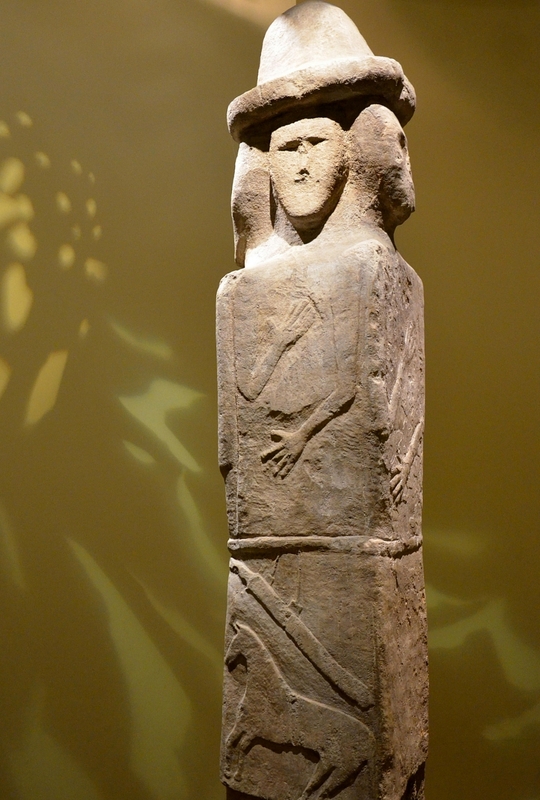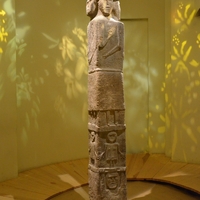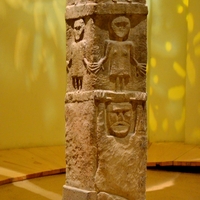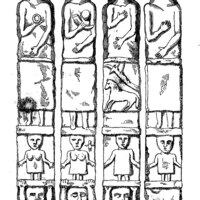Zbruch stele
Date:
Ninth or tenth century
Location or Findspot (Modern-Day Country):
Ukraine
Medium:
Stone
Dimensions:
2.67 × 29–32 cm
Description:
This tall limestone stele was fished out of the Zbruch (or Zbrucz) River in 1848 (then part of Poland, now western Ukraine). It may or may not have come from a sanctuary on the Bogyt (or Bogt) Mountain nearby. It is usually dated to the ninth or tenth century and interpreted as a polytheistic Slavic idol, although some scholars consider it a nineteenth-century forgery.
The figure at the bottom, who appears in shallow relief on three sides (the fourth is blank), may be the three-headed deity of the underworld. He supports three levels of the cosmos—the underworld, earth, and heaven. In the middle zone, four small human figures, two male and two female, hold hands and appear to dance in a circle. In the upper register a larger figure (a male god? or alternating male and female gods?) is represented with a different attribute on three sides (a ring, horn, or a horse and sword) and nothing on the fourth. The four faces share a single tall cap with a shallow brim. The same four-faced figure is represented on figurines found in Poland and Scandinavia.
The figure at the bottom, who appears in shallow relief on three sides (the fourth is blank), may be the three-headed deity of the underworld. He supports three levels of the cosmos—the underworld, earth, and heaven. In the middle zone, four small human figures, two male and two female, hold hands and appear to dance in a circle. In the upper register a larger figure (a male god? or alternating male and female gods?) is represented with a different attribute on three sides (a ring, horn, or a horse and sword) and nothing on the fourth. The four faces share a single tall cap with a shallow brim. The same four-faced figure is represented on figurines found in Poland and Scandinavia.
Relevant Textbook Chapter(s):
5,
6
Repository and Online Resources:
• Read more about the stele on the website of the Archaeological Museum of Krakow
Image Credits:
Wikimedia Commons




